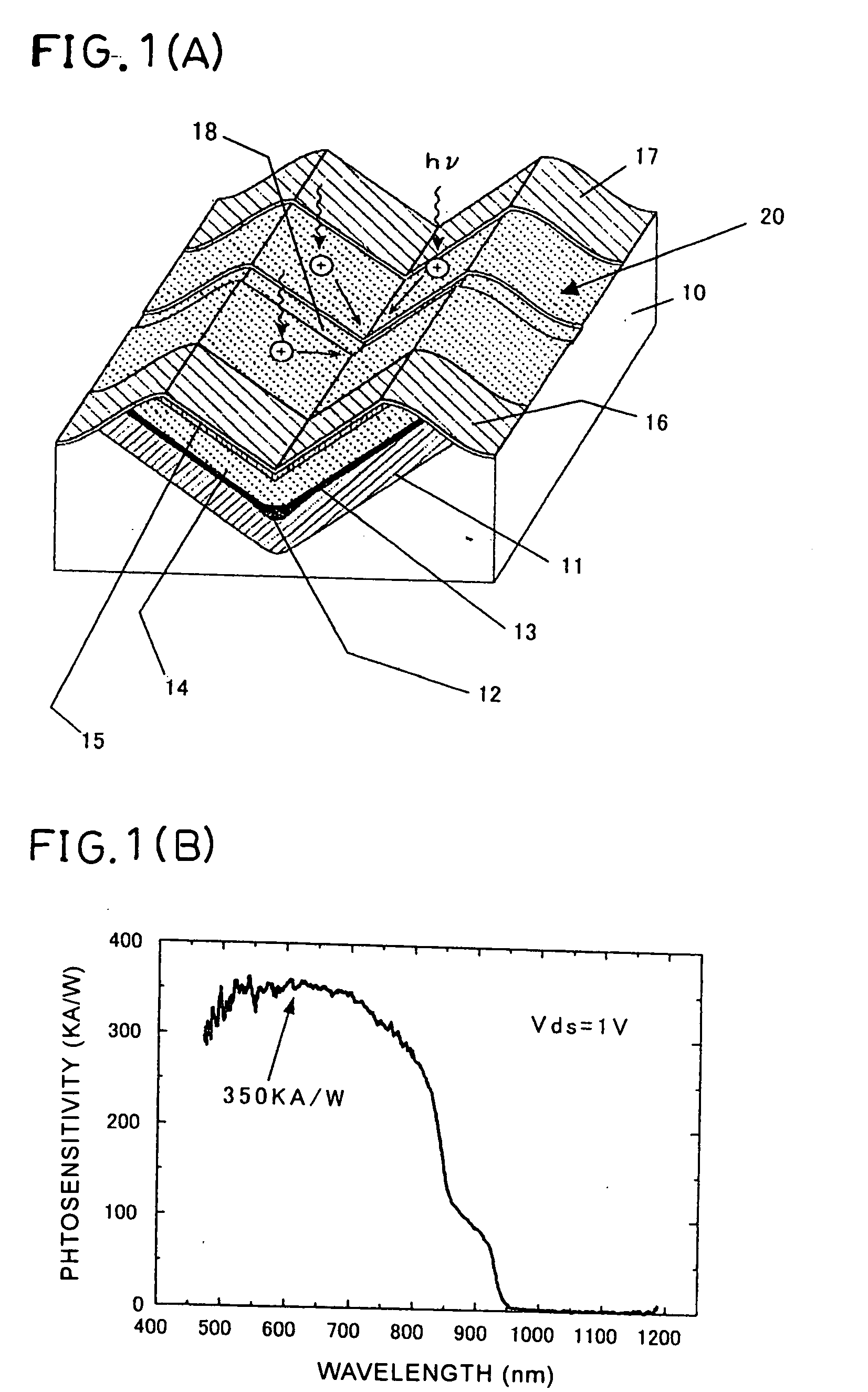Photodetector
a photodetector and detector technology, applied in the field of photodetectors, can solve the problems of inability to improve the s/n ratio, the bulky size of the photomultiplier tube, and the inability to make the array, so as to reduce the length and width of the channel, the effect of high speed and reduced channel width
- Summary
- Abstract
- Description
- Claims
- Application Information
AI Technical Summary
Benefits of technology
Problems solved by technology
Method used
Image
Examples
Embodiment Construction
[0035]FIG. 1(A) shows the schematic structure of one embodiment of a photodetector constituted according to the present invention. In this case, the V-grooved substrate 10 is assumed to have been made by forming a V-shaped groove in a GaAs or InP substrate. A known method of forming such a V-shaped groove may be used; for example, by forming a 0.2-2 μm resist pattern in the [0-10] orientation upon a (100) GaAs substrate and then using an aqueous ammonia-hydrogen peroxide solution (ammonia:hydrogen peroxide:water=1:3:50) or the like to perform wet etching with high dependence on the crystal orientation.
[0036] This V-grooved substrate 10 is sequentially subjected to a series of operations. For example, a single run of MOCVD deposition can be used to form: an undoped AlGaAs lower clad layer 11, a GaAs or InGaAs quantum wire 12, an intervening undoped AlGaAs spacer layer (not shown), a silicon-doped AlGaAs upper clad layer 14, and a silicon-doped GaAs cap layer 15. Here, the deposition...
PUM
 Login to View More
Login to View More Abstract
Description
Claims
Application Information
 Login to View More
Login to View More - R&D
- Intellectual Property
- Life Sciences
- Materials
- Tech Scout
- Unparalleled Data Quality
- Higher Quality Content
- 60% Fewer Hallucinations
Browse by: Latest US Patents, China's latest patents, Technical Efficacy Thesaurus, Application Domain, Technology Topic, Popular Technical Reports.
© 2025 PatSnap. All rights reserved.Legal|Privacy policy|Modern Slavery Act Transparency Statement|Sitemap|About US| Contact US: help@patsnap.com



